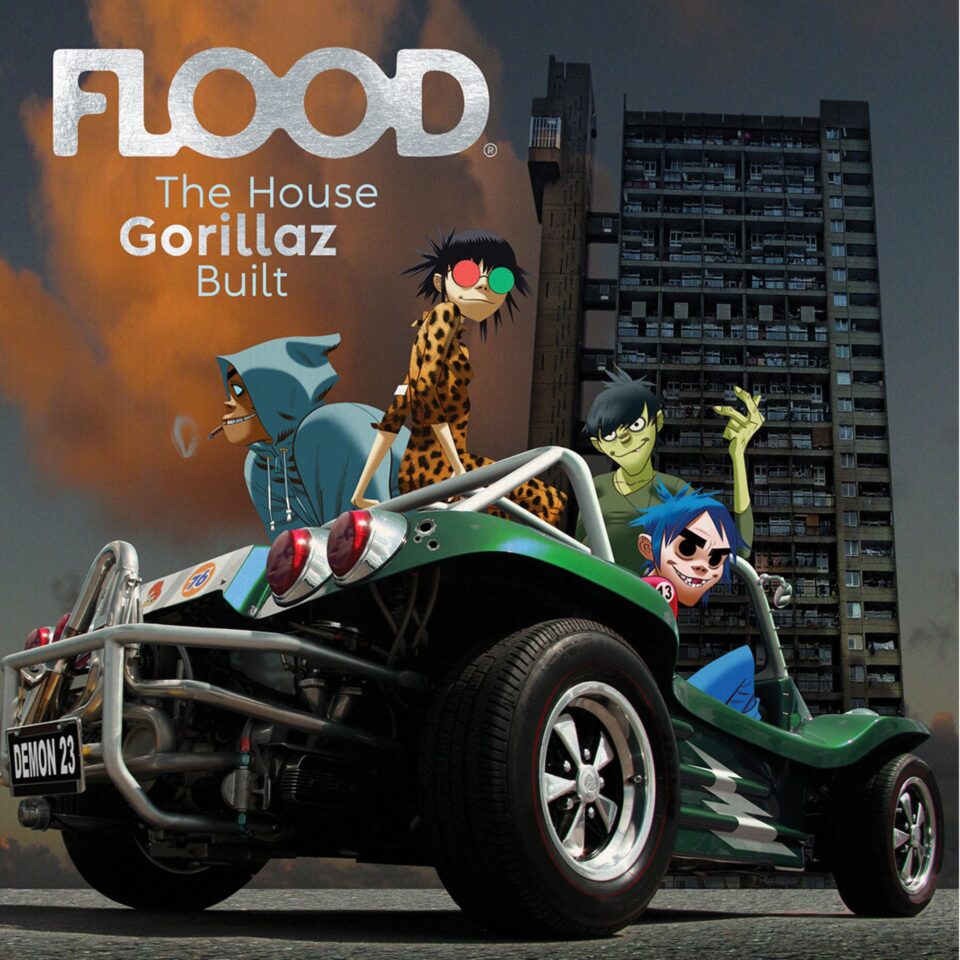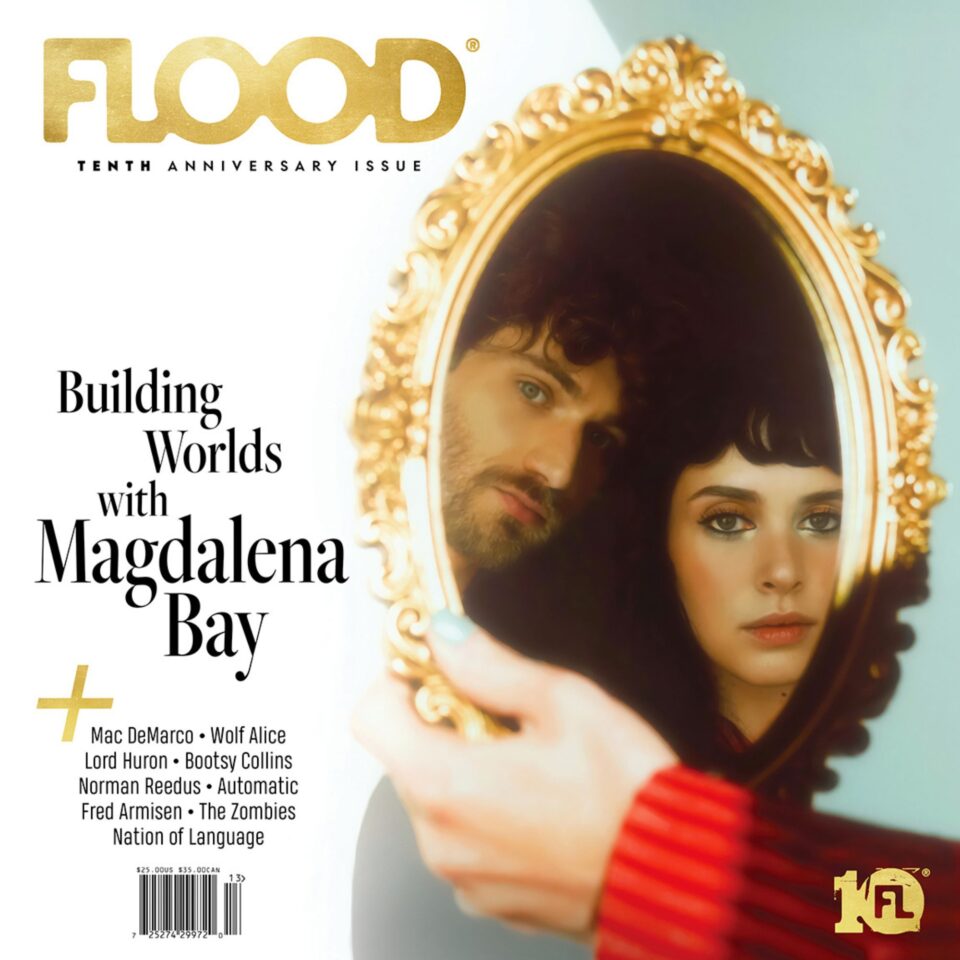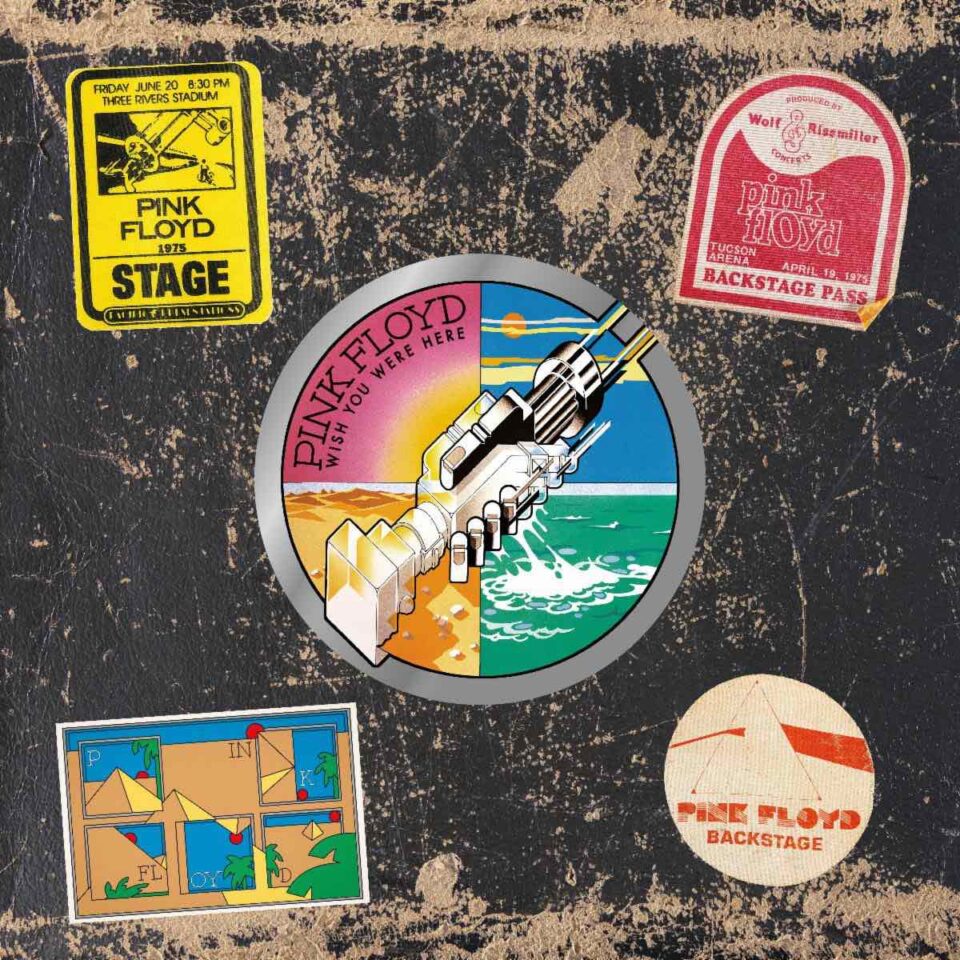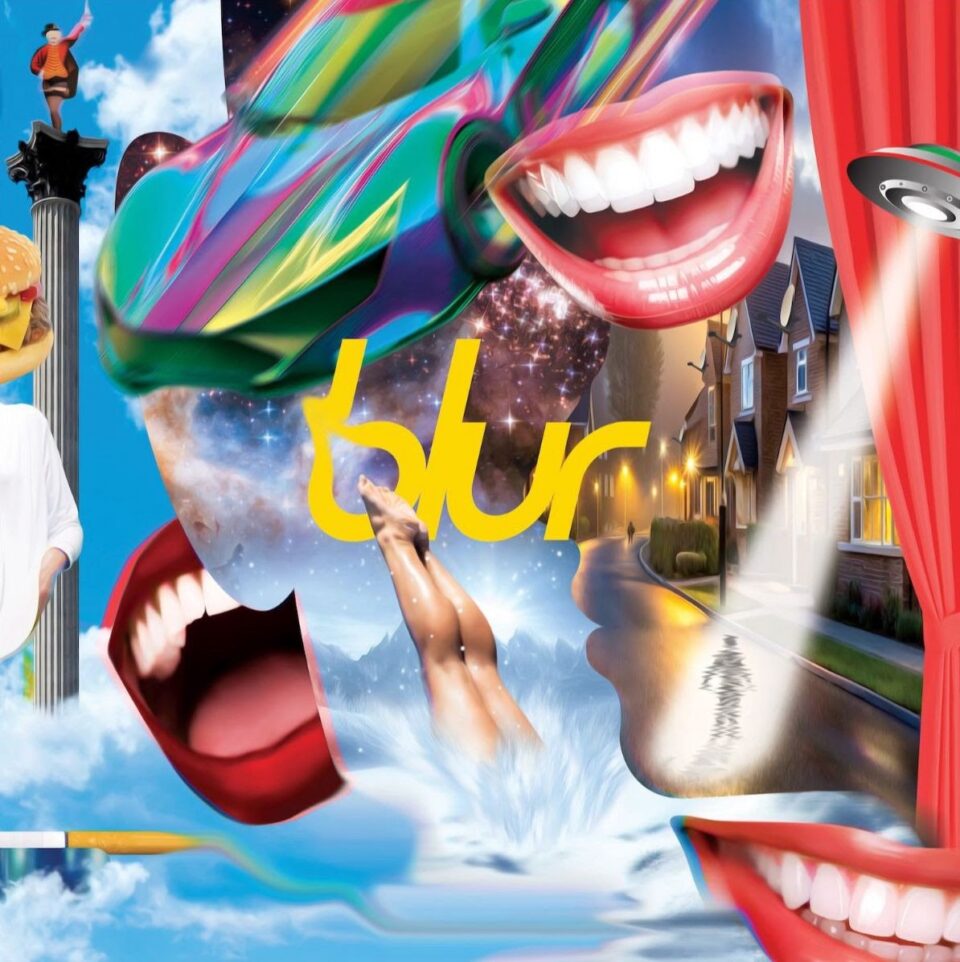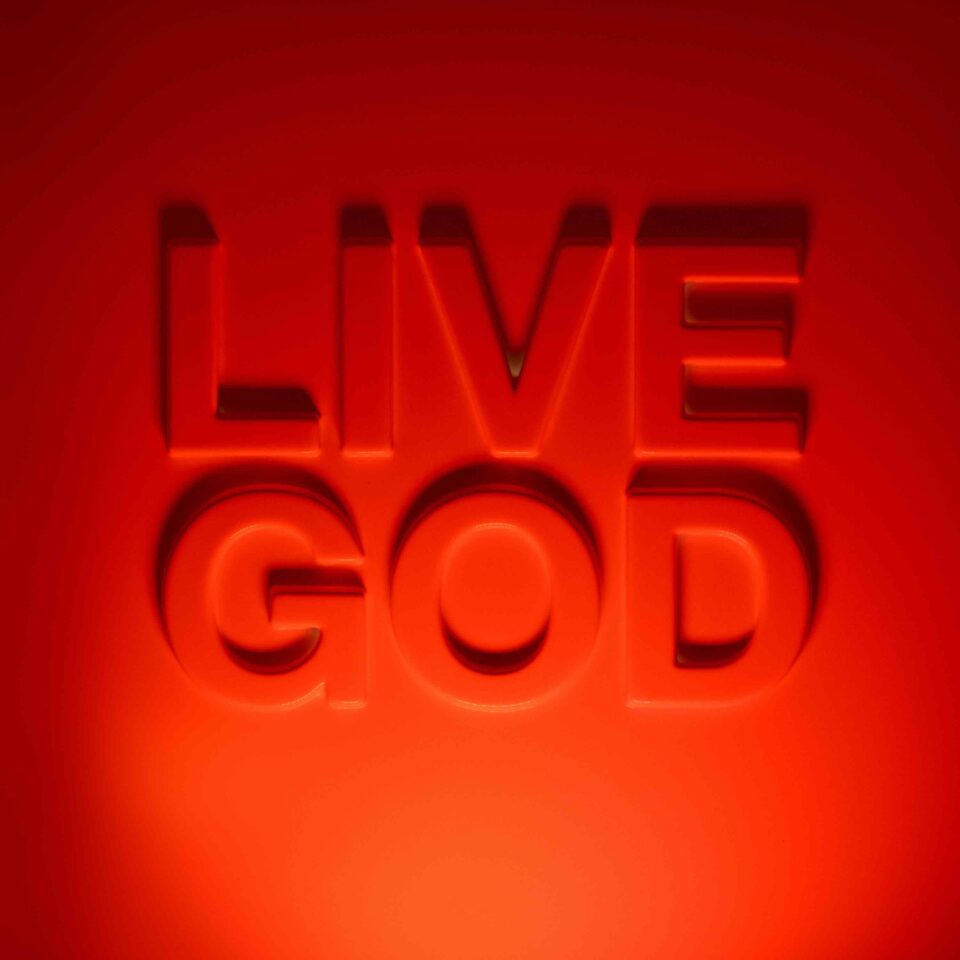If glam-godhead photographer Mick Rock was correct in his assertion that The Rocky Horror Picture Show is “a unique phenomenon; with nothing to compare it to,” as “it occupies its own unchallenged space in the history of modern popular culture,” then its creator Richard O’Brien is an equally individualistic curiosity. Starting with its 1973 British stage production, through to the film’s box office failure of 1975 and its quick rise as a marvel of the midnight screening circuit, O’Brien—Rocky Horror’s creator, script co-author, song composer, and its Riff Raff—built a miracle universe of still-fresh, glam-rocky imagery tied to elements of the Hollywood dream factory and an innate pansexuality to bear on his outrageous rock musical.
Now, 50 years after its initial release, it’s been re-released on Blu-ray in 4K Ultra HD, and has been further immortalized with the coffee-table volume Rocky Horror: A Behind the Scenes Look at the Cult Classic, featuring never-before-published on-set snaps of the late Mick Rock as curated by his wife, Pati Rock. Between Rock’s flashy book and the flashier Blu-ray, O’Brien’s life’s work—his first bit of writing as well as his legacy—is a dream that its author always insisted we live out.
We spoke with O’Brien on the day of Rocky Horror: A Behind the Scenes Look at the Cult Classic’s publication about the film’s cultural and political legacy and more.
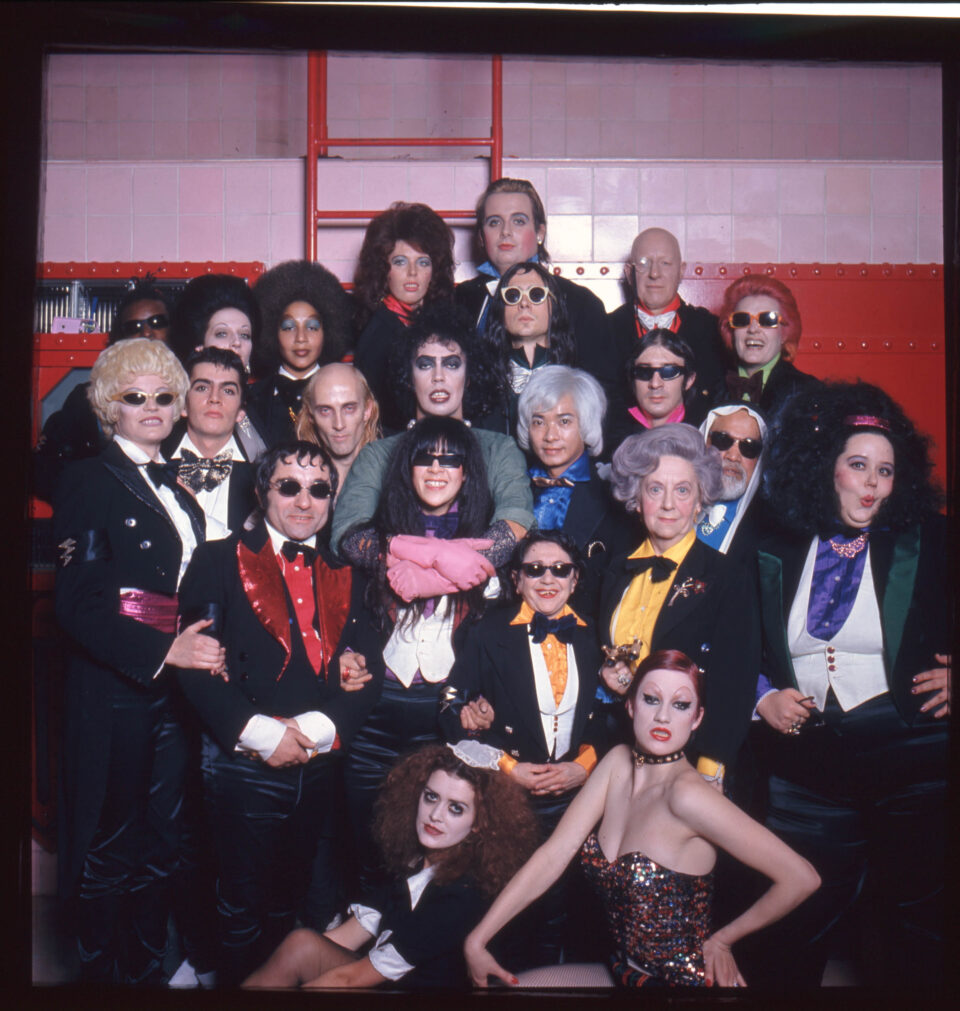
Rocky Horror Picture Show / Courtesy of The Estate of Mick Rock
You’ve said that The Rocky Horror Picture Show is dedicated to the disenfranchised and the marginalized. Is this film a deeply personal one for you?
No, I don’t think so. It’s just entertainment. I may start off writing something deeply personal, but I abandon it just as quickly.
Rocky Horror’s origin story comes around Christmas 1972 with you penning “Science Fiction/Double Feature.” Bowie had only just debuted Ziggy Stardust, and T. Rex’s Electric Warrior was climbing the charts. What do you believe was your pre-zeitgeist embrace of glam in that moment?
The story begins for me earlier than that, in my arrested development. I was an eternal teenager, forever a 1950s adolescent, which is something that I carried with me throughout the 1960s and beyond. I always happened to be at the right place at the right time, then, in London. Glam suited me down to the ground. It allowed me to be more feminine in my manner of dress. You could wear a dress in the streets, suddenly, because laws against homosexuality had been repealed, as it was no longer deemed to have been a psychological fuck-up.
There were other influences, too, such as New York City’s Living Theater and London’s lunchtime Open Space theater. Our working-class music heroes such as The Beatles, and working-class actors such as Michael Caine and Tom Courtney—that all shifted…
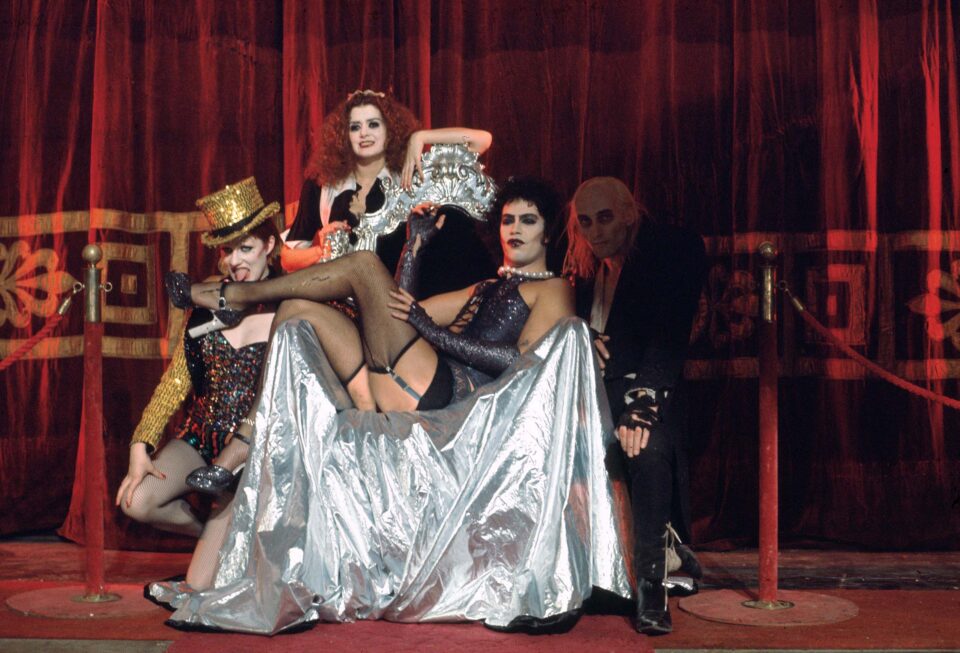
Rocky Horror Picture Show / Courtesy of The Estate of Mick Rock
“Glam suited me down to the ground... You could wear a dress in the streets, suddenly, because laws against homosexuality had been repealed.”
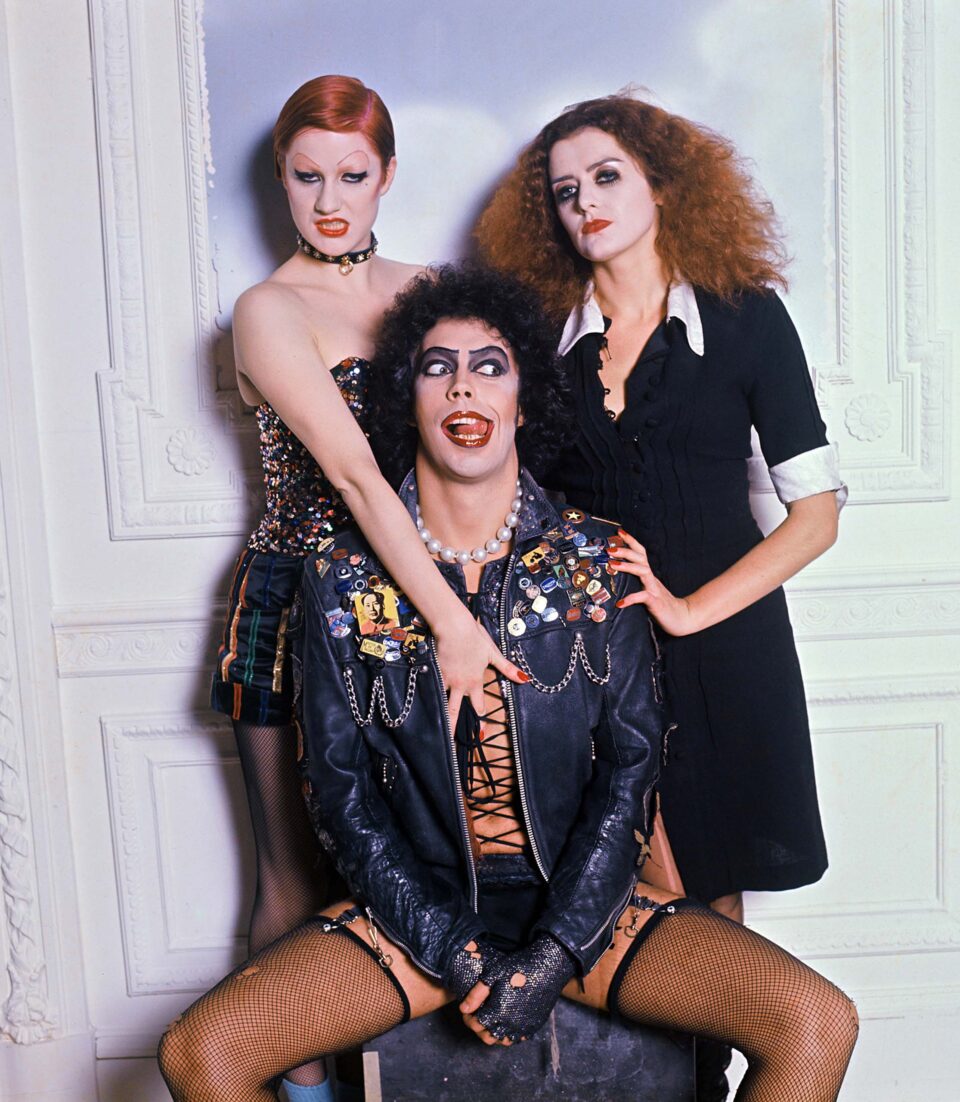
Nell Campbell, Tim Curry, and Patricia Quinn on Rocky Horror Picture Show set.
…toward something more you, more feminine.
Yes. And the Royal Court Theatre allowed us to have that sort of fun. Our director Jim Sharman had been asked to do something in their main theater, some Australian play—which he agreed to, but only if he could have fun upstairs in its smaller, 60-seat theater first. That was Rocky Horror. And make no mistake: the Royal Court people loved us. There were smiles all through that theater. We were a hit from day one. Our play, however, had nothing socially inspiring or important to say. That didn’t fit the Royal Court’s “serious theater” remit. Ours was a diversion, a bit of frippery. We were seen to be unimportant, as we didn’t come with a message like the serious, muscular theater of American playwrights such as Arthur Miller and Clifford Odets. So the Royal Court were happy to see us there, and they were happy to see us go.
The strange thing is, however, that Rocky Horror was, and is, important and muscular and very much comes with a message—this lovely, childish entertainment of ours is a rainbow event where people can get together and feel safe among other rainbow citizens. Mankind’s greatest tragedy is Abrahamic creation and fantasy—it’s fucked us up. Rationality has left the room. That’s how we get Donald Trump and all of his horrible people. We’ve allowed fantasists to tell us what’s real and not real. These are dangerous times, and Rocky Horror offers us a place that’s safe. Isn’t that ironic?
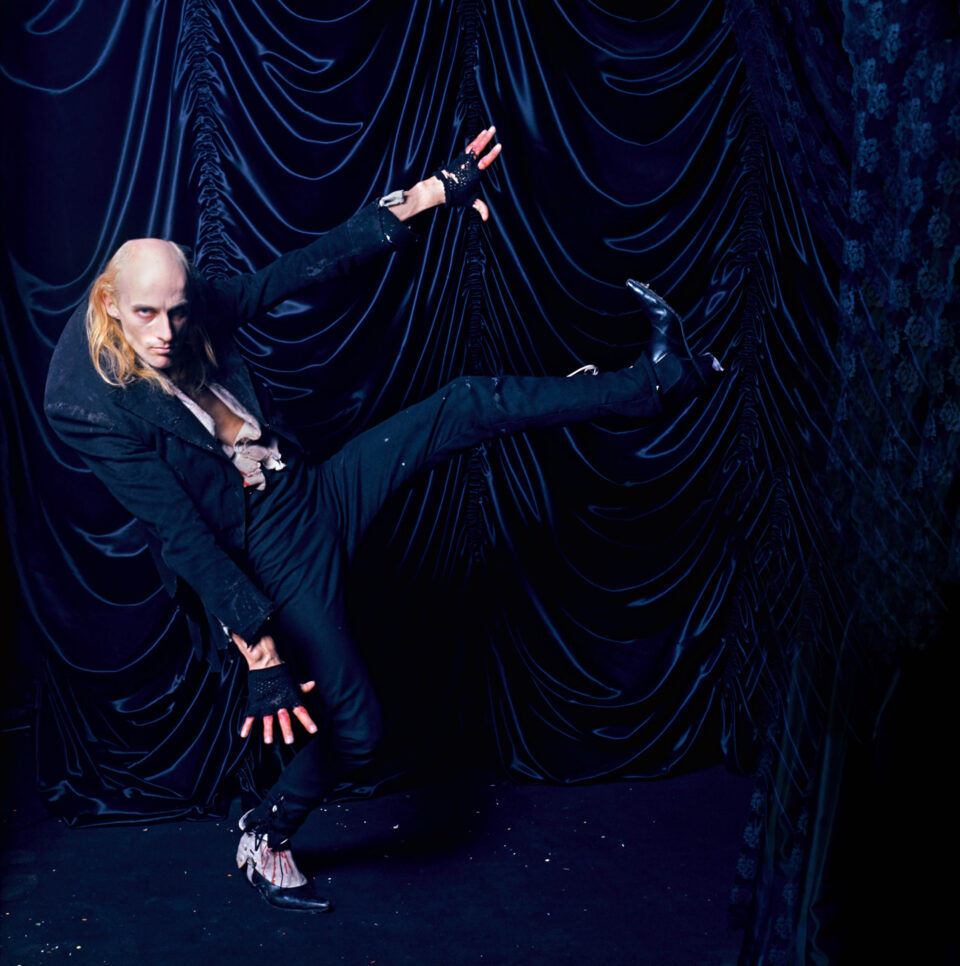
Richard O’Brien
“This lovely, childish entertainment of ours is a rainbow event where people can get together and feel safe among other rainbow citizens.”
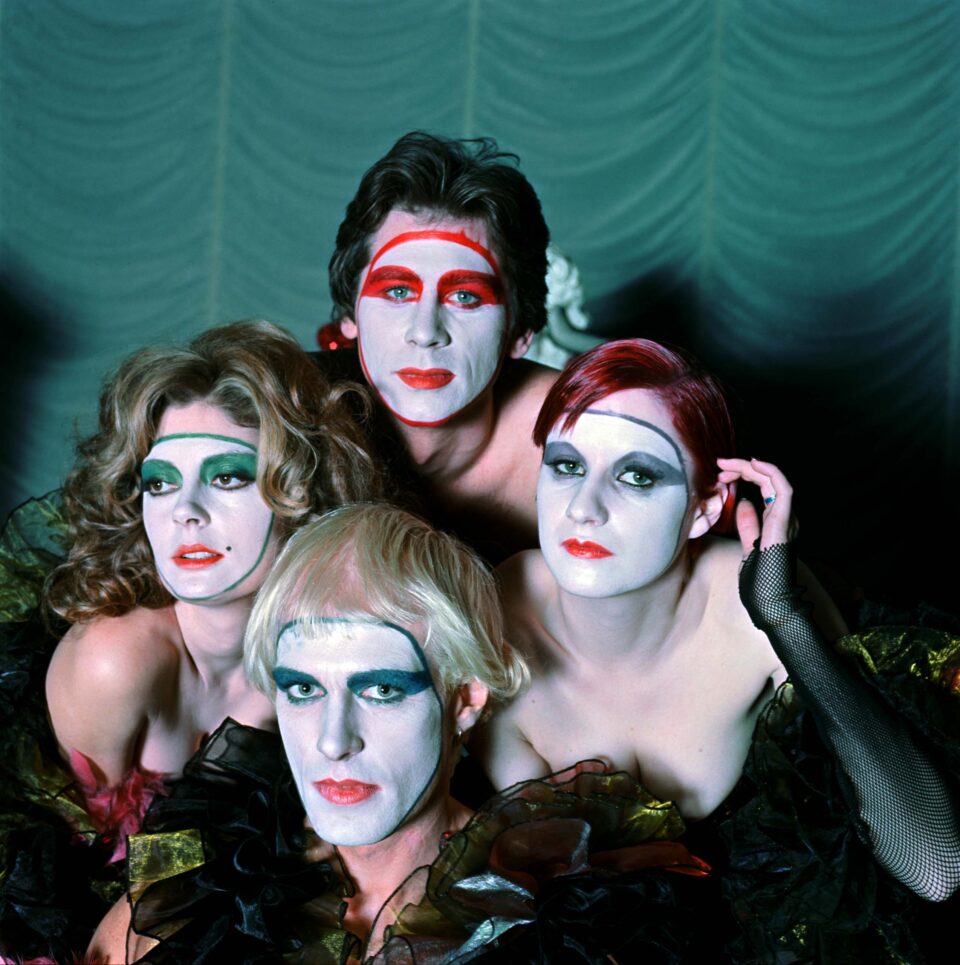
Rocky Horror Picture Show / Courtesy of The Estate of Mick Rock
Because Rocky Horror does come with a serious message.
Yes, it’s the death of the American Dream. Brad and Janet are straight out of the 1950s—the time of Ike Eisenhower. The line “Crawling on the planet’s face / Some insects called the human race / Lost in time and lost in space / And meaning” seems very apt today if you consider that dream lost.
Was this the first writing you’d done where you could allow the absolute feminine to come through?
It was my first piece of writing, period. I’d written songs since the age of 15—derivative rock and roll songs, three chords, three verses, 4/4 time. Rocky Horror was the first time I’d sat down to write a story with songs. The fact that I made Frank-N-Furter this transvestic creature was probably cathartic—brave of me, I suppose. Perhaps, to my shame, I never went into much to resolve why I did that then, and why I didn’t do that sooner. Maturity, it seems, is not my strong suit.
From the stage to the film: why Tim Curry?
Have you seen him perform? He ticked all the boxes. I wonder often whether Rocky Horror would’ve had the success it enjoyed if it had been an actor other than him in that role.
Is there any glee that you took from filming Rocky Horror on the Hammer Film Co. sound stage?
Absolutely. It was nice to go to that huge house that turns up again and again in many Hammer horror films, as it was both so convenient and so Gothic-Revival style. It was lovely being part of that tradition. In all of my arrogance I once told a casting agent that I’d like to take over the roles that Christopher Lee and Peter Cushing used to play. Cushing used to take those roles so seriously. That was one of the joys of writing Rocky Horror: finding the unspoken humor, the unintentional laugh lines in all of that clunky dialogue.
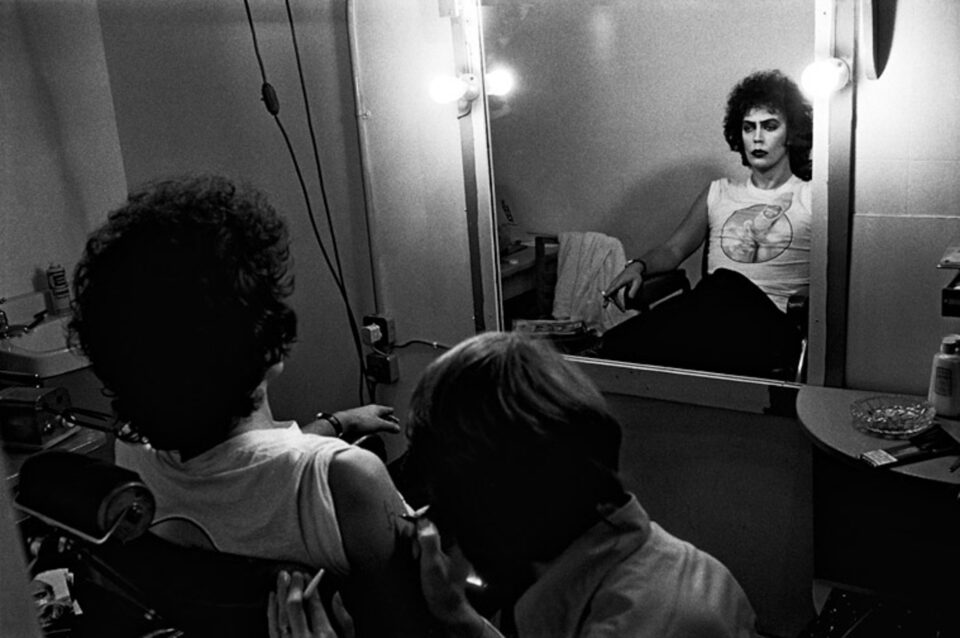
Rocky Horror Picture Show / Courtesy of The Estate of Mick Rock
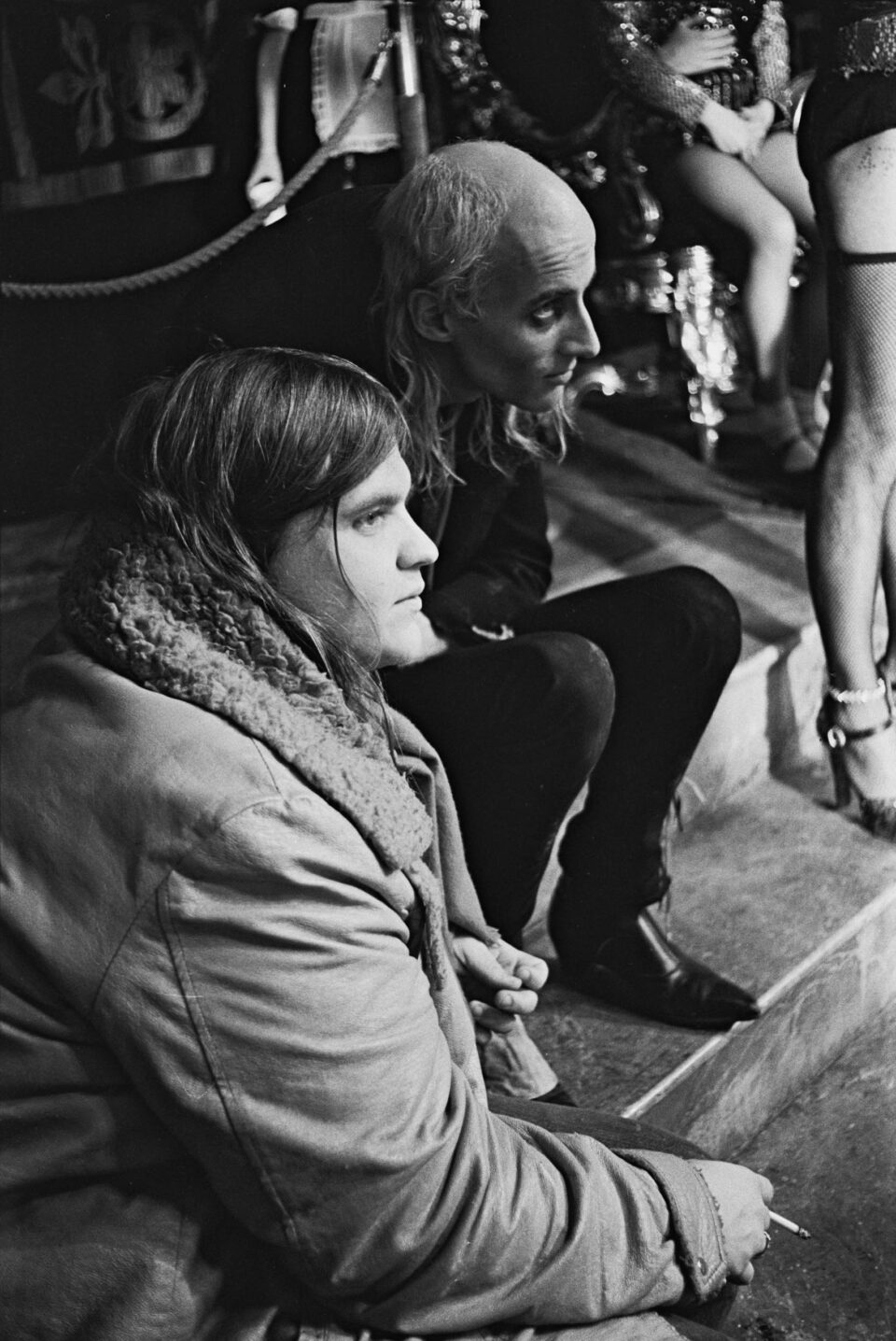
Michael Lee Aday (a.k.a. Meatloaf) and Richard O’Brien on Rocky Horror Picture Show set.
“That was one of the joys of writing Rocky Horror: finding the unspoken humor, the unintentional laugh lines in all of that clunky dialogue.”
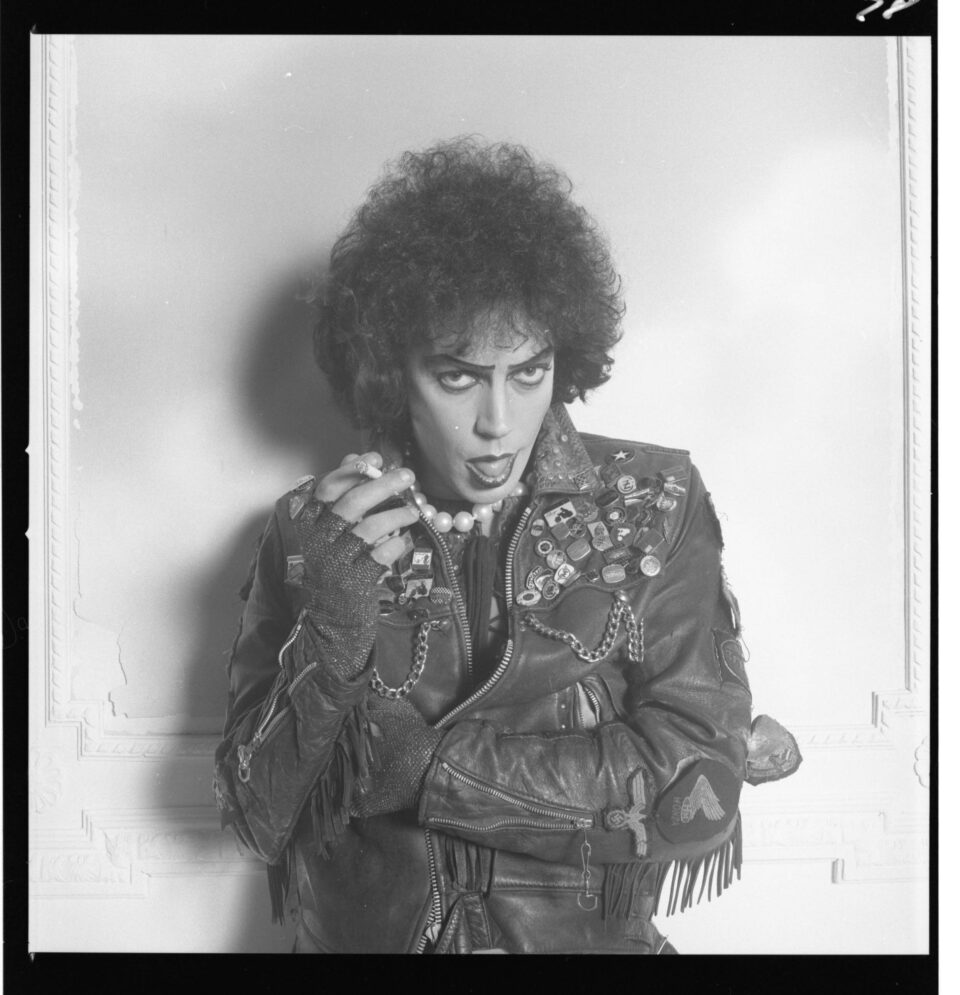
Tim Curry
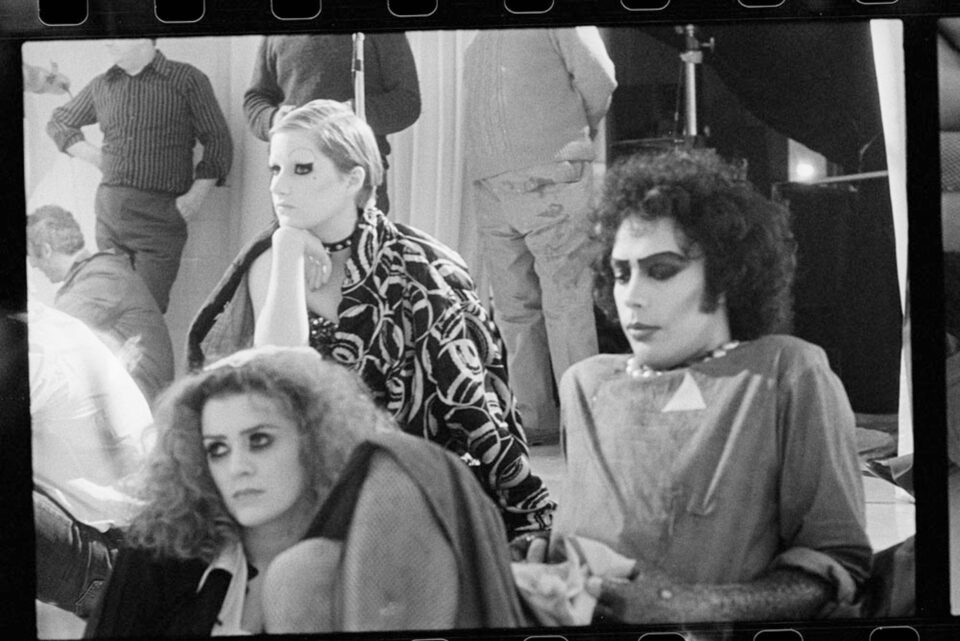
Rocky Horror Picture Show / Courtesy of The Estate of Mick Rock
If we’re talking about great characters, Mick Rock is certainly one—a prime mover when it comes to the glam era. What do you recall about him landing that job?
One of the reasons that Jim warmed to Rocky Horror in the first place was that he came around to my place to discuss the story beforehand, and when he got there, I had a Velvet Underground album on the turntable. Jim immediately admitted to his deep admiration for Lou Reed. That was a good omen, I felt. Jim saw that same thing, too, obviously in Mick Rock and all those iconic photos that he’d taken of Reed.
Jim was very big on American pre-punk, and was very aware of what was going on in the world. He’d just done Jesus Christ Superstar on stage, and that was a very big deal. People stormed the streets saying that it shouldn’t be staged, as it was irreligious. All of the decadence that went with punk—Lou Reed, Warhol, Pop Art, Candy Darling—Jim found that attractive. So did I. People used to say that we put Pop Art on stage with Rocky Horror, and they’re likely correct as our show was ripe with American themes and motifs, chock full of nods to adverts on the backs of magazines and pulp fiction and all that. I get so much credit for coming up with the line “Don’t dream it, be it,” but that was an ad line for Fredericks of Hollywood. I wasn’t so much a writer as I was an archivist.
Is there one image that you have of The Rocky Horror Picture Show that lingers even after you close your eyes, a muscle memory?
There are several bits that resonate. No other actor really does this, but he was encouraged to do so: Tim breaking that fourth wall and looking straight into the camera, straight down the lens. In doing so, he made this connection, this collusion, between him and the audience without the usual wink, nod, and nudge. It’s just this suggestive “hello,” and suddenly it’s him and us against the rest of the world.
The swimming pool, too, with the Michaelangelo painting of God touching Adam’s finger is pretty good when you consider our small budget. When Lou Adler saw that scene during the rushes he said, “Now, that looks like a million dollars.” What pleases me about all of the scenes is that we were doing a parody without one single actor admitting that in their performance. It was never, “Aren’t we funny?” We played it as the most serious theater piece ever. And we really got away with it, as it could’ve been this silly piece of camp nonsense. It’s not a sex show. It’s a fairy tale—a rite-of-passage fairy tale.
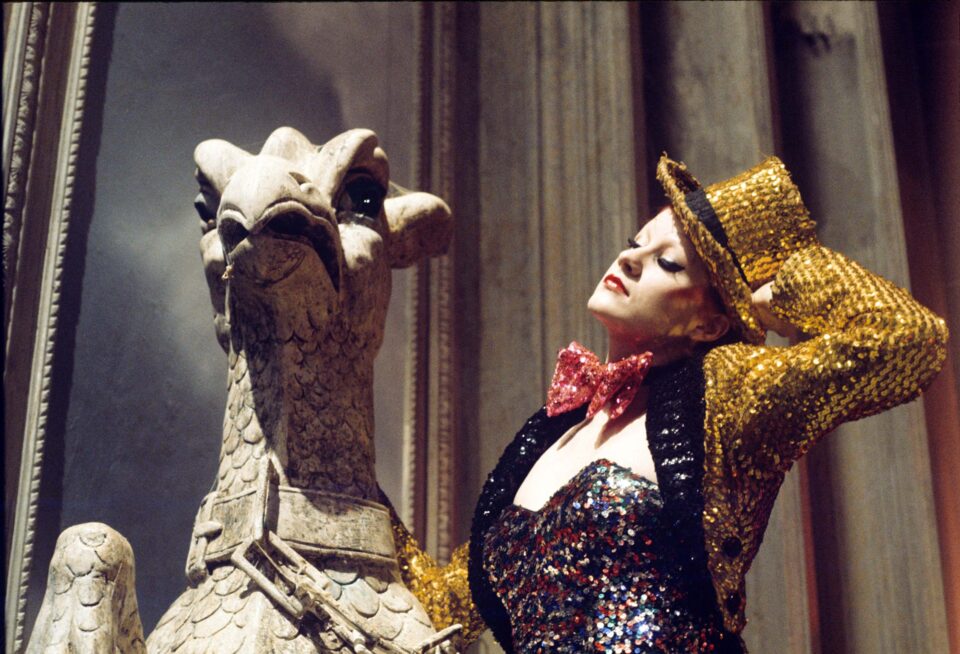
Rocky Horror Picture Show / Courtesy of The Estate of Mick Rock
“I love being confined by meter and delivering words that make sense, are artfully placed, can fly, and bring joy either through their wit or their beauty. Lyrics are the very best puzzles.”
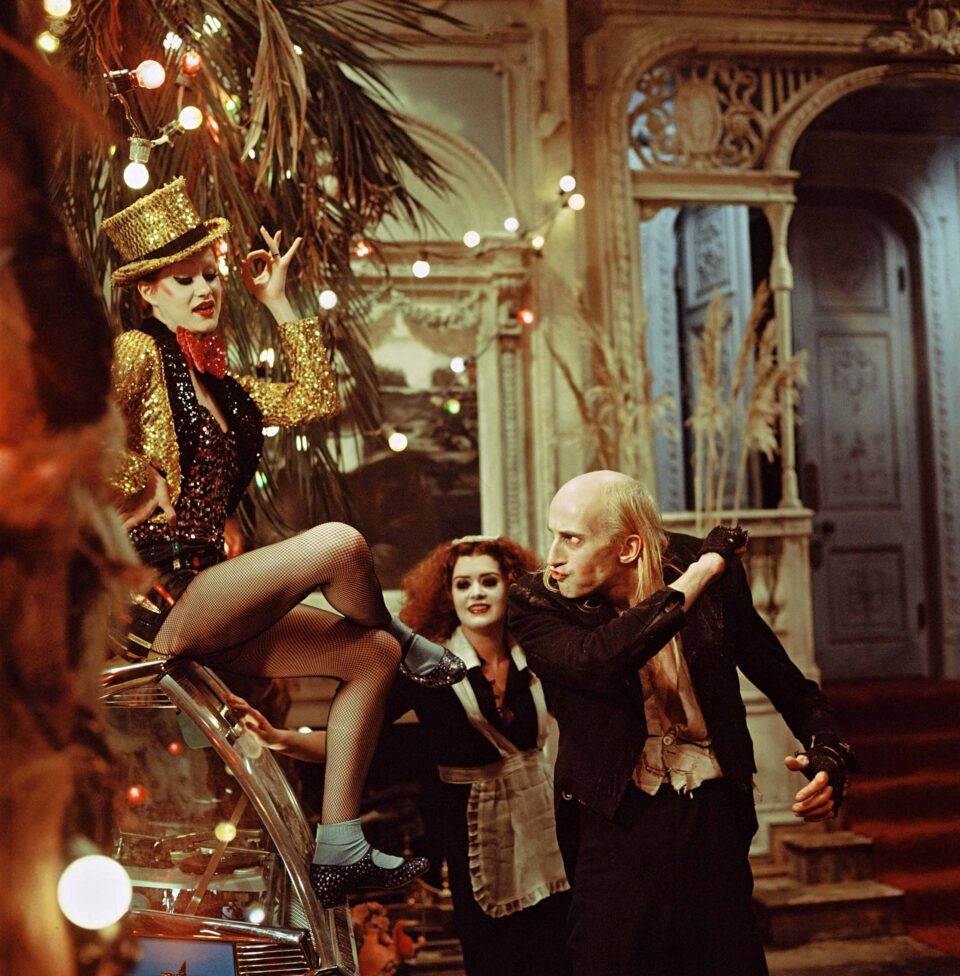
Nell Campbell, Patricia Quinn,
Is the work of keeping the multimillion cult juggernaut that Rocky Horror has become afloat a full-time job, or have you satisfied all of your aesthetic needs?
I’m exceptionally lazy. The success of Rocky allowed me to stay home, that I could be more frivolous with my work. Rocky allowed me to be less hungry, I suppose. My greatest joy is writing lyrics. I love being confined by meter and delivering words that make sense, are artfully placed, can fly, and bring joy either through their wit or their beauty. Lyrics are the very best puzzles.
If Rocky Horror is indeed a fairy tale, is there some odd irony that it’s Disney who’s now releasing the new Blu-Ray?
It’s true, though, that Rocky is a fairy tale. Brad and Janet are Hansel and Gretel. Frank lives in the Gingerbread House and is the mean witch. Or it’s Adam and Eve with the apple and the serpent. Disney? I just wish all of these American companies would stand up to this orange slug that you have in the Oval Office rather than just paying him off. Keep the rainbow banner flying high. FL
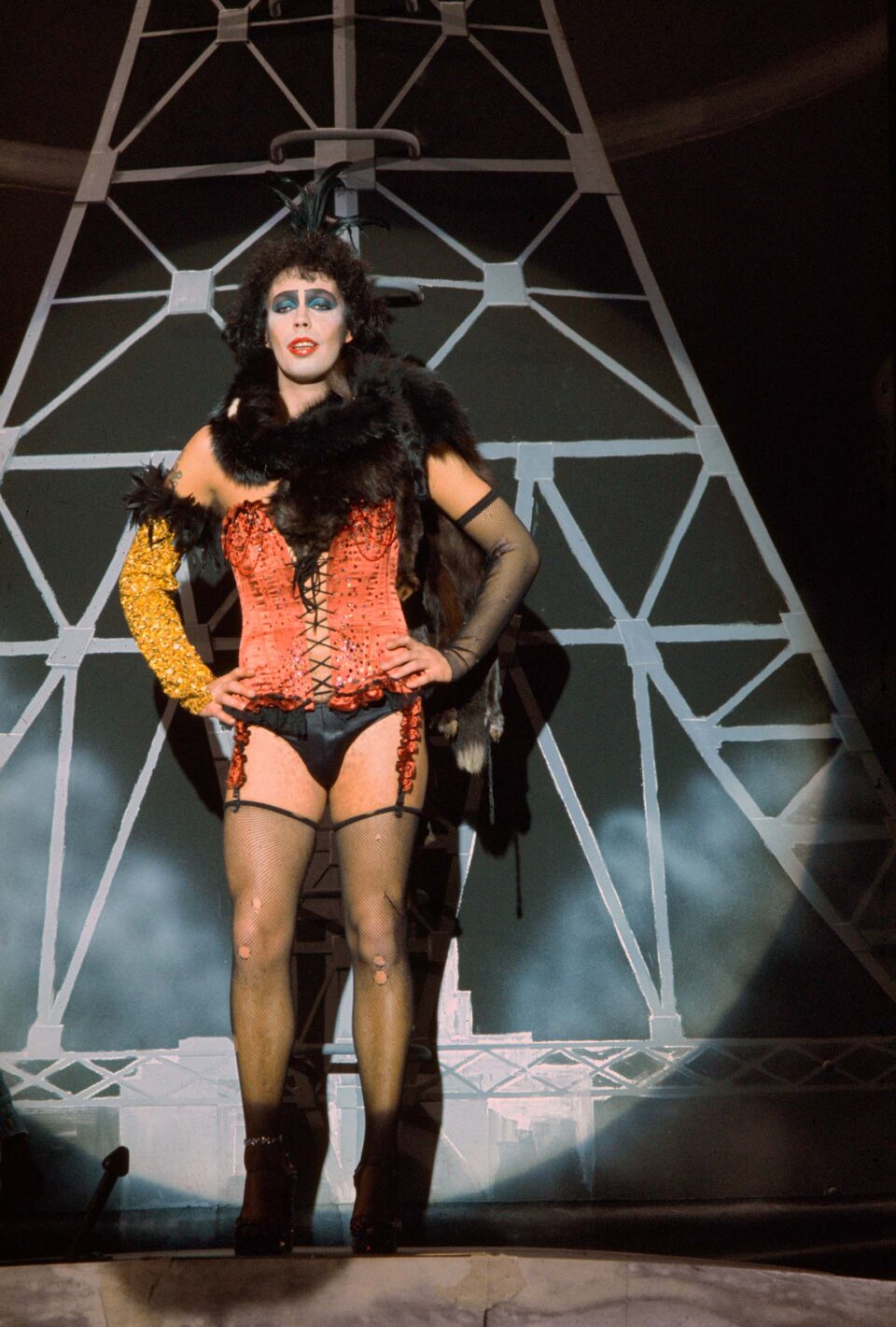
Rocky Horror Picture Show / Courtesy of The Estate of Mick Rock


